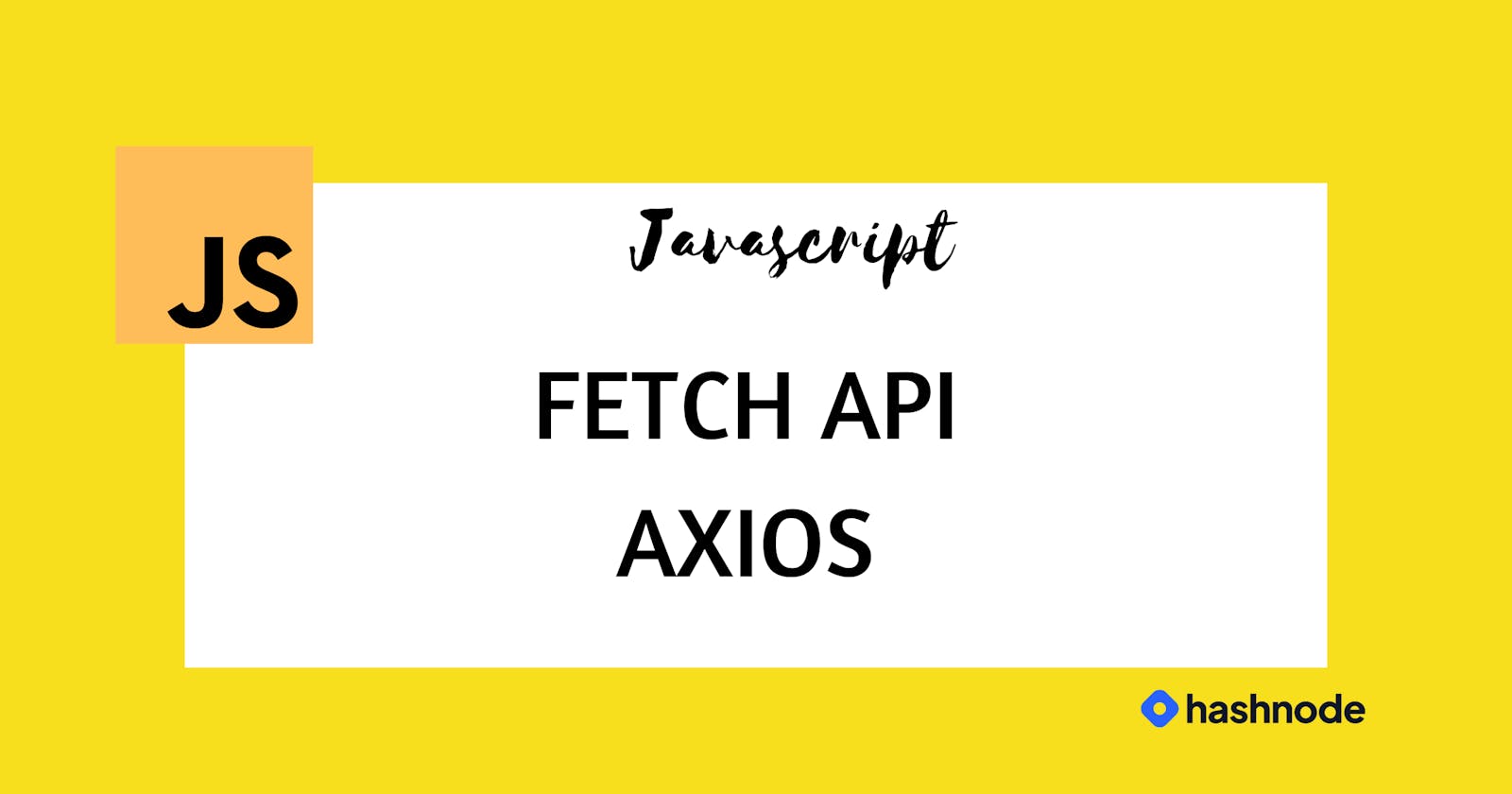In modern web development, communicating with servers and fetching data is an essential aspect. To achieve this, JavaScript offers two popular methods: Fetch API and Axios. Both of these methods provide an interface for making HTTP requests, but they have some differences in terms of features and usage. In this blog, we will explore both Fetch API and Axios, compare their strengths, and provide an intuitive example for each to help you understand their usage better.
1. Understanding HTTP Requests
Before diving into Fetch API and Axios, let's have a quick refresher on HTTP requests. HTTP (Hypertext Transfer Protocol) is the foundation of data communication on the web. There are several types of HTTP requests, but the most commonly used ones are GET (retrieve data) and POST (send data to a server).
2. Fetch API
What is Fetch API?
Fetch API is a modern web standard for making network requests in JavaScript. It provides a simple and straightforward way to make HTTP requests and handle responses using Promises.
Making a Basic GET Request with Fetch API
// Fetch data from a URL
fetch('https://api.example.com/data')
.then(response => response.json())
.then(data => console.log(data))
.catch(error => console.error('Error:', error));
Handling Responses
Fetch API returns a Promise that resolves to the Response object. To extract the JSON data from the response, we use the .json() method.
Error Handling
If the server responds with an error status (e.g., 404), the .catch() block will handle the error.
Making POST Requests with Fetch API
const dataToSend = {
name: 'Rakesh Gupta',
email: 'rakeshgupta@random.com',
};
fetch('https://api.example.com/submit', {
method: 'POST',
headers: {
'Content-Type': 'application/json',
},
body: JSON.stringify(dataToSend),
})
.then(response => response.json())
.then(data => console.log(data))
.catch(error => console.error('Error:', error));
3. Axios
What is Axios?
Axios is a popular JavaScript library used for making HTTP requests. It works both in the browser and Node.js environments and provides additional features like request/response interception, automatic JSON data parsing, and error handling.
Installing Axios
To use Axios, you need to install it first:
npm install axios
Making a Basic GET Request with Axios
const axios = require('axios');
// Fetch data from a URL
axios.get('https://api.example.com/data')
.then(response => console.log(response.data))
.catch(error => console.error('Error:', error));
Handling Responses
Axios automatically parses the JSON response, and you can access the data using response.data.
Error Handling
Similar to Fetch API, Axios also handles errors through the .catch() block.
Making POST Requests with Axios
const axios = require('axios');
const dataToSend = {
name: 'Rakesh Gupta',
email: 'rakeshgupta@random.com',
};
// Make a POST request
axios.post('https://api.example.com/submit', dataToSend)
.then(response => console.log(response.data))
.catch(error => console.error('Error:', error));
4. Comparing Fetch API and Axios🆚
Both Fetch API and Axios serve the purpose of making HTTP requests, but Axios offers some additional conveniences. Axios provides automatic JSON parsing and a cleaner API for handling common use cases, while Fetch API is built into the browser and does not require additional dependencies.
Here are some key points to consider when choosing between Fetch API and Axios:
| Feature/Comparison | Fetch API | Axios |
| Browser and Node.js support | Browser-native feature | Works in both browser and Node.js |
| JSON Parsing | Requires explicit parsing | Automatic JSON parsing |
Conclusion:
In this blog, we explored two powerful ways to make HTTP requests in JavaScript: Fetch API and Axios. We covered making GET and POST requests with both methods and highlighted their strengths and differences.
Ultimately, the choice between Fetch API and Axios depends on your project requirements and browser compatibility needs. So, feel free to use either method confidently in your web development journey!
Thanks for reading!📖❤️🔥
